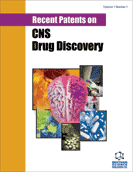Abstract
Background: Anandamide (AEA) and 2-arachidonoyl glycerol (2-AG) are signalling lipids which belong to the class of endocannabinoids (ECs) and exert their actions by activating cannabinoid receptor type-1 (CB1) and type-2 (CB2). These receptors are involved in many physiological and pathological processes in the central nervous system (CNS) and in peripheral organs. Despite many potent and selective ligands for cannabinoid receptors have been generated over the last two decades, this class of compounds achieved only a very limited therapeutic success, mainly because of the CB1- mediated side effects.
Methods: The compounds and results presented in this review article have been gathered from an extensive research in public databases for patents, clinical trials and scientific literature. Reference to patent numbers, clinical trial registry numbers, websites and scientific articles is provided in the text and/or in the reference section.
Results: Over the last 10-15 years, many inhibitors for the main EC hydrolytic enzymes fatty acid amide hydrolase (FAAH), monoacylglycerol lipase (MAGL), α,β-hydrolase domain-6 (ABHD6) and -12 (ABHD12) have been synthesized and characterized in vitro and in vivo. Additionally, other targets have been explored for the modulation of the endocannabinoid system (ECS). Among them, several novel inhibitors for COX-2, diacylglycerol lipases and the putative endocannabinoid membrane transporter have been described in the literature. Polypharmacological approaches which combine mild or reversible inhibition of at least two of these targets are also under investigation.
Conclusions: The ECS offers several therapeutic opportunities beyond the direct activation of cannabinoid receptors. The modulation of EC levels in vivo represents an interesting therapeutic perspective for several CNS-related diseases. Based on the literature and patent literature this review provides an overview of the different classes of inhibitors for FAAH, MAGL, ABHDs and COX-2 used as tool compounds and for clinical development with a special focus on CNS-related diseases.
Keywords: Endocannabinoid system, endocannabinoid, anandamide, 2-arachidonoyl glycerol, FAAH, MAGL, cannabinoid receptors.
 72
72





















